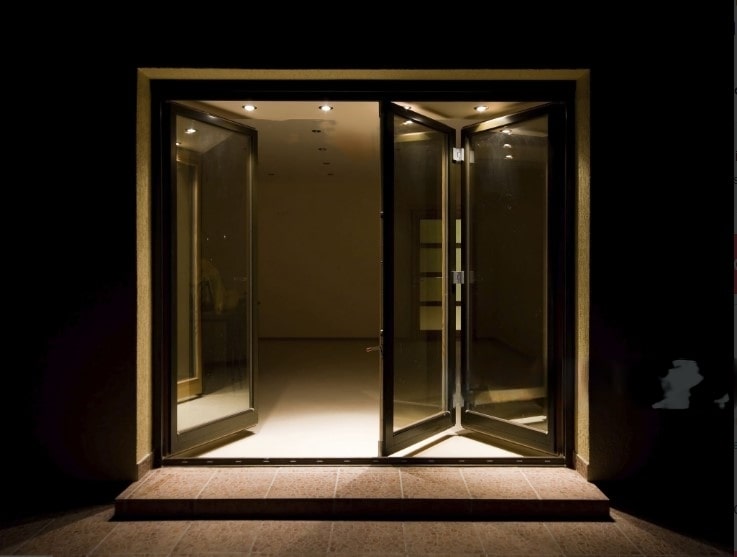One option that might catch your eye is a steep roof. With its bold and distinctive look, a steep roof can instantly transform the appearance of any house. However, you must consider the advantages and disadvantages before making a choice.
In this blog post, we’ll explore the benefits of a steep roof, as well as some potential drawbacks. We’ll also discuss factors to consider before choosing this roofing style, including cost comparisons and maintenance considerations. So grab a cup of coffee, and let’s dive into the world of steep roofs – is it the right choice for your home?
Contents
What is a Steep Roof?
A steep roof, also known as a pitched or sloped roof, is characterized by its high angle of inclination. Unlike flat roofs or low-slope roofs, which have a gentle slope and minimal visible pitch, steep roofs are much steeper in comparison. The pitch of a roof refers to the ratio of vertical rise to horizontal span.
One key feature of a steep roof is its ability to shed water and snow quickly. This makes it an excellent choice for areas that experience heavy rainfall or snowy winters. The vertical angle allows precipitation to slide off easily, reducing the risk of leaks and water damage.
In addition to its functional benefits, a steep roof can significantly enhance the aesthetic appeal of your home. It adds dimension and visual interest to the overall design while creating an impression of grandeur and elegance.
Steep roofs come in various styles, such as gable, hip, mansard, or even combinations thereof. Each style offers unique architectural features that can complement different house designs and personal preferences.
However, it’s important to note that installing a steep roof requires careful planning and expertise from professional contractors due to its complex nature. The construction process may involve additional structural considerations compared to other roofing options.
A steep roof offers both practical advantages and visual appeal for homeowners seeking durability and eye-catching design elements for their home’s exteriors.
Benefits of a Steep Roof
- A steep roof may be one of many choices for homeowners, but it certainly has its benefits. One of the significant advantages is its ability to shed snow and rain quickly. With a steep slope, precipitation slides off easily, preventing any buildup that could potentially lead to leaks or structural damage.
- In addition to its functional aspect, a steep roof also adds aesthetic appeal to your home’s exterior. The dramatic angle creates visual interest and can enhance the overall architectural design. It gives your property a unique look that stands out among other houses in the neighborhood.
- Another benefit of a steep roof is increased attic space. The steeper the slope, the more room you have for storage or potential living areas. This additional space can be utilized in various ways, such as creating an extra bedroom or office.
- Moreover, since water drains quickly from a steep roof, it helps prevent moisture-related issues like mold growth or rotting wood. This can save you from costly repairs and maintain the longevity of your home’s structure.
- If you live in an area prone to high winds or severe weather conditions, a steep roof offers better resistance against these elements compared to flatter roofs. Its pitch provides better stability and reduces the risk of wind damage.
- Considering these advantages, it’s clear why some homeowners opt for a steep roof despite its less conventional choice!
Drawbacks of a Steep Roof
Steep roofs may have their advantages, but they also come with a few drawbacks that should be considered before deciding on your home. One of the main disadvantages is the increased cost of installation. The steep angle requires more materials and labor to properly install the roof, which can drive up the overall price.
Another drawback is the limited accessibility for maintenance and repairs. With such a steep slope, it can be challenging to safely navigate and carry out routine tasks like cleaning gutters or replacing shingles. This could result in additional costs if you need to hire professionals each time maintenance is required.
Furthermore, snow and ice buildup can pose a significant problem on steep roofs. The vertical angle allows these elements to accumulate faster and potentially cause damage or leaks if not adequately addressed.
Additionally, having a steep roof may limit your options when it comes to solar panel installations or rooftop additions such as dormers or skylights. These modifications are often easier to implement on roofs with lower slopes.
Safety concerns should not be overlooked when considering a steep roof. Maintaining balance while walking on this type of surface can be challenging, increasing the risk of accidents during inspections or repairs.
While there are certain drawbacks associated with choosing a steep roof for your home, it’s important to weigh them against the benefits before making a final decision.
Factors to Consider Before Choosing a Steep Roof
- When deciding whether or not a steep roof is the right choice for your home, there are several essential factors that you should take into consideration. First and foremost, you need to evaluate the structural integrity of your home. A steep roof puts more stress on the overall structure, so it’s crucial to ensure that your house can handle the increased weight and pressure.
- Another factor to consider is the climate in which you live. Steep roofs are better equipped to shed snow and ice than flatter roofs, making them an ideal option for areas with heavy winter precipitation. However, if you reside in an area prone to high winds or hurricanes, a steep roof may be more susceptible to damage.
- Furthermore, it’s essential to think about any potential aesthetic considerations. While some homeowners appreciate the unique charm and architectural appeal of a steep roofline, others may prefer a more traditional or modern look. Take into account how a steep roof will fit with the overall style of your home.
- Additionally, budgetary constraints play a significant role when choosing roofing materials for your home. Steeper roofs often require additional materials and labor due to their complexity and increased safety measures during installation. It’s crucial to carefully weigh these costs against other roofing options before making a final decision.
- Maintenance requirements should also be taken into account when considering a steep roof. Cleaning gutters can prove challenging due to limited access on steeper slopes, while repairs may require specialized equipment or expertise.
- Considering all these factors will help you make an informed decision when determining if a steep roof is suitable for your home.
Cost Comparison with Other Roofing Options
Cost is an essential factor to consider when it comes to choosing the right roofing option for your home. A steep roof may have its benefits, but how does it compare in terms of cost with other roofing options?
One alternative to a steep roof is a flat or low-slope roof. Flat roofs are generally less expensive to install than steep roofs because they require fewer materials and labor. However, maintenance and repairs can be more costly due to the increased risk of water pooling and leakage.
Another option worth considering is a metal roof. While metal roofs may have a higher upfront cost compared to both flat and steep roofs, they offer long-term savings due to their durability and energy efficiency. Metal roofs can last up to 50 years or more, reducing the need for frequent replacements.
If budget is a significant concern, asphalt shingles might be the most affordable choice. They come in various styles and colors at relatively lower costs compared to other roofing materials. However, keep in mind that asphalt shingles typically have a shorter lifespan compared to metal or tile roofs.
The cost comparison between different roofing options will depend on factors such as material quality, installation complexity, and local market prices. It’s essential to consult with professionals who can provide accurate estimates based on your specific needs before making a decision.
Remember that while cost plays a vital role in selecting your home’s roofing system, it shouldn’t be the sole determining factor. Consider other aspects like longevity, aesthetics, maintenance requirements, etc., when deciding which option best fits your home’s overall needs!
Maintenance and Safety Concerns for a Steep Roof
When it comes to maintaining a steep roof, there are a few factors to keep in mind. First and foremost, cleaning the gutters can be quite challenging due to the angle of the roof. This task often requires specialized equipment or professional assistance.
Another maintenance concern is the potential for loose shingles or tiles. With a steep roof, these materials are more susceptible to being dislodged during high winds or storms. Regular inspections and repairs may be necessary to ensure that your roof remains intact.
Safety is also an essential consideration with steep roofs. Working on such a roof can be dangerous, especially if you need to be experienced or adequately equipped. Climbing up and down ladders at extreme angles poses risks of falls and accidents.
In addition, accessing certain areas of the roof for repairs or maintenance can be difficult due to its steepness. This may require additional safety precautions, such as using harnesses or scaffolding systems.
While these maintenance and safety concerns should not deter you from choosing a steep roof, they are essential aspects to consider before making your decision. It’s crucial to weigh these factors against the benefits of having a more vertical pitch on your home’s roofing structure.
Conclusion:
In light of the pros and cons we’ve discussed, it’s clear that a steep roof can be both advantageous and challenging for homeowners. It offers benefits such as increased attic space, improved drainage, and enhanced curb appeal. However, it also comes with drawbacks like higher installation costs, maintenance requirements, and safety concerns.
Before deciding if a steep roof is suitable for your home, consider factors such as local climate conditions, architectural style preferences, budget constraints, and long-term maintenance commitments. Additionally, consult with roofing professionals who can provide expert advice tailored to your specific needs.
The decision of whether to choose a steep roof should be based on careful consideration of all these factors. Each home is unique, with its own set of requirements and priorities. By weighing the advantages against the disadvantages and factoring in personal circumstances, you’ll be able to make an informed choice that suits your home’s individual needs.
Remember that choosing the right roofing option is essential not only for protecting your property but also for enhancing its overall appeal. So, take your time to assess all aspects before making a final decision on whether or not a steep roof is suitable for your home.
Latest Posts!



